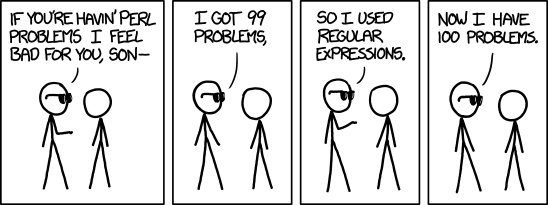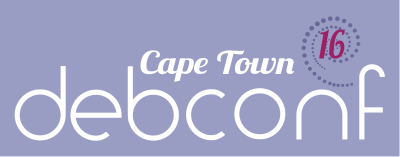Antoine Beaupr : An update to GitHub's terms of service
On February 28th, GitHub
published
a brand new version of its Terms of
Service
(ToS). While the first
draft
announced earlier in February didn't generate much reaction, the new ToS
raised concerns that they may break at least the spirit, if not the
letter, of certain free-software licenses. Digging in further reveals
that the situation is probably not as dire as some had feared.
The first person to raise the alarm was probably Thorsten Glaser, a
Debian developer, who
stated
that the "new GitHub Terms of Service require removing many Open
Source works from it". His concerns are mainly about section
D
of the document, in particular section
D.4
which states:
ToS versus GPL
The concern here is that the ToS bypass the normal provisions of
licenses like the GPL. Indeed, copyleft licenses are based on copyright
law which forbid users from doing anything with the content unless they
comply with the license, which forces, among other things, "share alike"
properties. By granting GitHub and its users rights to reproduce content
without explicitly respecting the original license, the ToS may allow
users to bypass the copyleft nature of the license. Indeed, as Joey
Hess, author of git-annex,
explained
:
You grant us and our legal successors the right to store and display your Content and make incidental copies as necessary to render the Website and provide the Service.Section D.5 then goes on to say:
[...] You grant each User of GitHub a nonexclusive, worldwide license to access your Content through the GitHub Service, and to use, display and perform your Content, and to reproduce your Content solely on GitHub as permitted through GitHub's functionality
ToS versus GPL
The concern here is that the ToS bypass the normal provisions of
licenses like the GPL. Indeed, copyleft licenses are based on copyright
law which forbid users from doing anything with the content unless they
comply with the license, which forces, among other things, "share alike"
properties. By granting GitHub and its users rights to reproduce content
without explicitly respecting the original license, the ToS may allow
users to bypass the copyleft nature of the license. Indeed, as Joey
Hess, author of git-annex,
explained
:
The new TOS is potentially very bad for copylefted Free Software. It
potentially neuters it entirely, so GPL licensed software hosted on
Github has an implicit BSD-like license
Hess has since removed all his content (mostly mirrors) from GitHub.
Others disagree. In a well-reasoned blog post, Debian developer Jonathan
McDowell
explained
the rationale behind the changes:
My reading of the GitHub changes is that they are driven by a desire
to ensure that GitHub are legally covered for the things they need to
do with your code in order to run their service.
This seems like a fair point to make: GitHub needs to protect its own
rights to operate the service. McDowell then goes on to do a detailed
rebuttal of the arguments made by Glaser, arguing specifically that
section D.5 "does not grant [...] additional rights to reproduce
outside of GitHub".
However, specific problems arise when we consider that GitHub is a
private corporation that users have no control over. The "Services"
defined in the ToS explicitly "refers to the applications,
software, products, and services provided by GitHub". The term
"Services" is therefore not limited to the current set of services. This
loophole may actually give GitHub the right to bypass certain provisions
of licenses used on GitHub. As Hess detailed in a later blog
post:
If Github tomorrow starts providing say, an App Store service, that
necessarily involves distribution of software to others, and they put
my software in it, would that be allowed by this or not?
If that hypothetical Github App Store doesn't sell apps, but licenses
access to them for money, would that be allowed under this license
that they want to my software?
However, when asked on IRC, Bradley M. Kuhn of the Software Freedom
Conservancy explained that "ultimately, failure to comply with a
copyleft license is a copyright infringement" and that the ToS do
outline a process to deal with such infringement. Some lawyers have also
publicly expressed their disagreement with Glaser's assessment, with
Richard Fontana from Red Hat
saying
that the analysis is "basically wrong". It all comes down
to the intent of the ToS, as Kuhn (who is not a lawyer) explained:
any license can be abused or misused for an intent other than its
original intent. It's why it matters to get every little detail right,
and I hope Github will do that.
He went even further and said that "we should assume the ambiguity in
their ToS as it stands is favorable to Free Software".
The ToS are in effect since February 28th; users "can accept them
by clicking the broadcast announcement on your dashboard or by
continuing to use GitHub". The immediacy of the change is one of
the reasons why certain people are rushing to remove content from
GitHub: there are concerns that continuing to use the service may be
interpreted as consent to bypass those licenses. Hess even hosted a
separate copy of the ToS
[PDF] for people to be able to
read the document without implicitly consenting. It is, however, unclear
how a user should remove their content from the GitHub servers without
actually agreeing to the new ToS.
CLAs
When I read the first draft, I initially thought there would be concerns
about the mandatory Contributor License Agreement (CLA) in section D.5
of the
draft:
[...] unless there is a Contributor License Agreement to the
contrary, whenever you make a contribution to a repository containing
notice of a license, you license your contribution under the same
terms, and agree that you have the right to license your contribution
under those terms.
I was concerned this would establish the controversial practice of
forcing CLAs on every GitHub user. I managed to find a post from a
lawyer, Kyle E. Mitchell, who
commented
on the draft and, specifically, on the CLA. He outlined issues with
wording and definition problems in that section of the draft. In
particular, he noted that "contributor license agreement is not a
legal term of art, but an industry term" and "is a bit
fuzzy". This was clarified in the final draft, in section
D.6,
by removing the use of the CLA term and by explicitly mentioning the
widely accepted norm for licenses: "inbound=outbound". So it seems that
section D.6 is not really a problem: contributors do not need to
necessarily delegate copyright ownership (as some CLAs require) when
they make a contribution, unless otherwise noted by a
repository-specific CLA.
An interesting concern he raised, however, was with how GitHub
conducted the drafting process. A blog post announced the change on
February 7th with a link to a form to provide feedback until the 21st,
with a publishing deadline of February 28th. This gave little time for
lawyers and developers to review the document and comment on it. Users
then had to basically accept whatever came out of the process as-is.
Unlike every software project hosted on GitHub, the ToS document is not
part of a Git repository people can propose changes to or even
collaboratively discuss. While Mitchell acknowledges that "GitHub
are within their rights to update their terms, within very broad limits,
more or less however they like, whenever they like", he sets
higher standards for GitHub than for other corporations, considering the
community it serves and the spirit it represents. He described the
process as:
[...] consistent with the value of CYA, which is real, but not with
the output-improving virtues of open process, which is also real, and
a great deal more pleasant.
Mitchell also explained that, because of its position, GitHub can have a
major impact on the free-software world.
And as the current forum of preference for a great many developers,
the knock-on effects of their decisions throw big weight. While GitHub
have the wheel and they ve certainly earned it for now they can do
real damage.
In particular, there have been some concerns that the ToS change may be
an attempt to further the already diminishing
adoption
of the GPL for free-software projects; on GitHub, the GPL has been
surpassed by
the MIT license. But Kuhn believes that attitudes at GitHub have begun
changing:
GitHub historically had an anti-copyleft culture, which was created in
large part by their former and now ousted CEO, Preston-Warner.
However, recently, I've seen people at GitHub truly reach out to me
and others in the copyleft community to learn more and open their
minds. I thus have a hard time believing that there was some
anti-copyleft conspiracy in this ToS change.
GitHub response
However, it seems that GitHub has actually been proactive in reaching
out to the free software community. Kuhn noted that GitHub contacted the
Conservancy to get its advice on the ToS changes. While he still thinks
GitHub should fix the ambiguities quickly, he also noted that those
issues "impact pretty much any non-trivial Open Source and Free Software
license", not just copylefted material. When reached for comments, a
GitHub spokesperson said:
While we are confident that these Terms serve the best needs of the
community, we take our users' feedback very seriously and we are
looking closely at ways to address their concerns.
Regardless, free-software enthusiasts have other concerns than the new
ToS if they wish to use GitHub. First and foremost, most of the software
running GitHub is proprietary, including the JavaScript served to your
web browser. GitHub also created a centralized service out of a
decentralized tool (Git). It has become the largest code hosting service
in the world after only a few years and may well have become a single
point of failure for free software collaboration in a way we have never
seen before. Outages and policy changes at GitHub can have a major
impact on not only the free-software world, but also the larger
computing world that relies on its services for daily operation.
There are now free-software alternatives to GitHub.
GitLab.com, for example, does not seem to have
similar licensing issues in its
ToS and GitLab itself is
free software, although based on the controversial open
core business model. The
GitLab hosting service still needs to get better than its grade of "C"
in the GNU Ethical Repository Criteria
Evaluations
(and it is being worked
on); other
services like GitHub and SourceForge score an "F".
In the end, all this controversy might have been avoided if GitHub was
generally more open about the ToS development process and gave more time
for feedback and reviews by the community. Terms of service are
notorious for being confusing and something of a legal gray area,
especially for end users who generally click through without reading
them. We should probably applaud the efforts made by GitHub to make its
own ToS document more readable and hope that, with time, it will address
the community's concerns.
Note: this article first appeared in the
Linux Weekly News.
[...] unless there is a Contributor License Agreement to the contrary, whenever you make a contribution to a repository containing notice of a license, you license your contribution under the same terms, and agree that you have the right to license your contribution under those terms.I was concerned this would establish the controversial practice of forcing CLAs on every GitHub user. I managed to find a post from a lawyer, Kyle E. Mitchell, who commented on the draft and, specifically, on the CLA. He outlined issues with wording and definition problems in that section of the draft. In particular, he noted that "contributor license agreement is not a legal term of art, but an industry term" and "is a bit fuzzy". This was clarified in the final draft, in section D.6, by removing the use of the CLA term and by explicitly mentioning the widely accepted norm for licenses: "inbound=outbound". So it seems that section D.6 is not really a problem: contributors do not need to necessarily delegate copyright ownership (as some CLAs require) when they make a contribution, unless otherwise noted by a repository-specific CLA. An interesting concern he raised, however, was with how GitHub conducted the drafting process. A blog post announced the change on February 7th with a link to a form to provide feedback until the 21st, with a publishing deadline of February 28th. This gave little time for lawyers and developers to review the document and comment on it. Users then had to basically accept whatever came out of the process as-is. Unlike every software project hosted on GitHub, the ToS document is not part of a Git repository people can propose changes to or even collaboratively discuss. While Mitchell acknowledges that "GitHub are within their rights to update their terms, within very broad limits, more or less however they like, whenever they like", he sets higher standards for GitHub than for other corporations, considering the community it serves and the spirit it represents. He described the process as:
[...] consistent with the value of CYA, which is real, but not with the output-improving virtues of open process, which is also real, and a great deal more pleasant.Mitchell also explained that, because of its position, GitHub can have a major impact on the free-software world.
And as the current forum of preference for a great many developers, the knock-on effects of their decisions throw big weight. While GitHub have the wheel and they ve certainly earned it for now they can do real damage.In particular, there have been some concerns that the ToS change may be an attempt to further the already diminishing adoption of the GPL for free-software projects; on GitHub, the GPL has been surpassed by the MIT license. But Kuhn believes that attitudes at GitHub have begun changing:
GitHub historically had an anti-copyleft culture, which was created in large part by their former and now ousted CEO, Preston-Warner. However, recently, I've seen people at GitHub truly reach out to me and others in the copyleft community to learn more and open their minds. I thus have a hard time believing that there was some anti-copyleft conspiracy in this ToS change.
 I woke this morning to
I woke this morning to 



 The post continues from the last
The post continues from the last  2.
2.  In fact one of the more interesting things I looked at and could look day and night is the variety of vehicles on display in Cape Town. In hindsight, I should have bought a couple of 128 GB MMC cards for my mobile rather than the 64 GB one. It was just plain inadequate to capture all that was new and interesting.
In fact one of the more interesting things I looked at and could look day and night is the variety of vehicles on display in Cape Town. In hindsight, I should have bought a couple of 128 GB MMC cards for my mobile rather than the 64 GB one. It was just plain inadequate to capture all that was new and interesting.
 The above picture is taken from Wikipedia from the article
The above picture is taken from Wikipedia from the article  .
.
 The first day of the real conference started with an excellent overview of what one can do with TeX, spanning from traditional scientific journal styles to generating router configuration for cruising ships.
The first day of the real conference started with an excellent overview of what one can do with TeX, spanning from traditional scientific journal styles to generating router configuration for cruising ships.
 After the closing of the session, one part of our group went off to the baseball match, while another group dived into a Japanese-style Izakaya where we managed to kill huge amounts of sake and quite an amount of food. The photo shows me after the first bottle of sake, while just seeping on an intermediate small amount of genshu (kind of strong undiluted sake) before continuing to the next bottle.
An interesting and stimulating first day of TUG, and I am sure that everyone was looking forward to day 2.
After the closing of the session, one part of our group went off to the baseball match, while another group dived into a Japanese-style Izakaya where we managed to kill huge amounts of sake and quite an amount of food. The photo shows me after the first bottle of sake, while just seeping on an intermediate small amount of genshu (kind of strong undiluted sake) before continuing to the next bottle.
An interesting and stimulating first day of TUG, and I am sure that everyone was looking forward to day 2.
